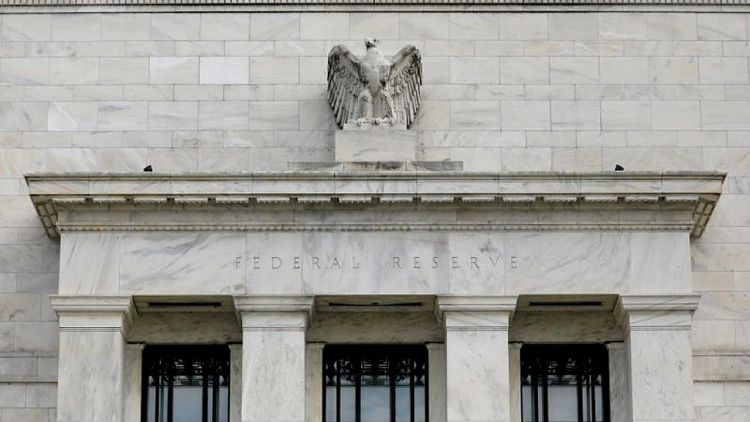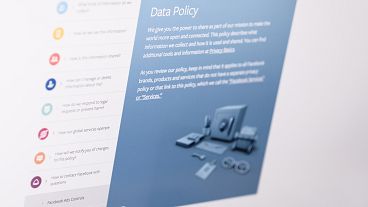By Ann Saphir and Jonnelle Marte
-U.S. President Joe Biden's coming decision of whether to reappoint Federal Reserve Chair Jerome Powell after his term expires in February or hand the reins to somebody else will arrive at a critical juncture for the central bank.
Progressive Democrats want the Fed to take on a more expansive role in the economy, by beefing up efforts to bolster employment, heading off climate risk and addressing inequality. Conservatives want it to stick to its monetary policy lane, pay more attention to tamping down inflation and reduce its footprint in financial markets and on the oversight front.
Whoever the Democratic president picks, the next Fed chief will need to tackle major questions about monetary policy and the nature of money.
Here are some of the biggest challenges in the next four years:
GETTING POLICY RIGHT
After the coronavirus pandemic hit, the Fed slashed its benchmark overnight interest rate to near zero and bought trillions of dollars of Treasuries and mortgage-backed securities.
With the economy rebounding quickly, Fed policymakers will likely start winding down the asset purchases later this year.
But under a new policy framework adopted last August, they plan to wait to raise interest rates until the economy reaches full employment, and inflation is at 2% and on track to moderately exceed that level.
It's a promise that a new Fed chief may struggle to keep. Most Fed policymakers believe the current burst of above-2% inflation is temporary. But if the price rises prove more persistent, whoever heads the central bank may end up overseeing a liftoff in rates before all would-be workers can get a job.
As of August there were 5.3 million fewer Americans employed than there were before the pandemic.
"There are a lot of things that are going to be different going forward that are really underlying structural aspects of the economy that I think we're going to have to pay a lot of attention to in order to make sure that we're appropriately calibrating our policy to the economy," Cleveland Fed President Loretta Mester said in an interview in August.
FED AS WATCHDOG
If the Fed's new framework has it keeping monetary policy looser for longer in pursuit of a stronger labor market, analysts say, it may need to tighten financial regulations to avert risky behavior that could precipitate a crisis.
"Financial regulation in my view is number two on the agenda, and especially continuing to deal with the issue of containing financial risk in an environment of historically low interest rates," said David Wilcox, a former top economist at the Fed and currently a senior fellow at the Peterson Institute for International Economics.
Whoever leads the Fed will also need to look at financial stability more broadly, Wilcox said.
Systemic weaknesses in how Treasuries and money markets are traded were laid bare last March by the near collapse of financial markets in the wake of the pandemic-related shutdowns.
The growing popularity of "stablecoins," a largely unregulated form of cryptocurrency that can be pegged to the dollar, also poses a brewing threat to financial stability, Boston Fed President Eric Rosengren has argued.
GOING DIGITAL?
One main question will be whether the Fed decides to issue its own digital currency. Powell has been non-committal so far. Fed Governor Lael Brainard, the other leading candidate for the top U.S. central bank job, has said she would find it hard to imagine not doing so. The Fed plans to publish a discussion paper on the topic in September.
Supporters say a well-designed digital currency could lower transaction costs and increase access to the banking system for disadvantaged groups. Others worry that banks could be sidelined if American households and businesses dispense with regular checking accounts and go straight to the Fed.
China and other countries are already issuing their own digital currencies, as are private companies such as Amazon.com Inc. If widely adopted, such tokens could fragment the payments system, threaten the Fed's ability to control interest rates, and endanger the U.S. dollar's global dominance.
"The Federal Reserve needs to figure this out pretty quickly," said Andrew Levin, an economics professor at Dartmouth College. "This is a challenge where the dust can settle within the next year or two."
CLIMATE RISKS
The Fed chief also will be under pressure to understand and address the economic and financial market implications of uncontrolled wildfires, super-powerful hurricanes, and other devastating impacts of climate change.
Both Powell and Brainard say it is the Fed's job to ensure banks are resilient to, for instance, drops in asset values due to wild weather events or government mandates to limit carbon dioxide emissions.
But the Fed's mandate does not include any remit to combat climate change directly, as is the case for some other central banks.
The Fed created two internal panels last year, one focused on climate-related risks at individual banks, and the other on system-wide threats. It also became the last major central bank to join the Network for Greening the Financial System, which develops recommendations for central banks to respond to climate change.
Both could be vehicles for the Fed chief to do more on the climate front, though a more aggressive stance on par with other central banks may prove difficult without new legislation.
RACIAL AND GENDER GAPS
Fed officials have also become more outspoken on the potential for racial and gender inequities to drag on economic growth https://fedcommunities.org/data/closethegaps.
U.S. Senator Pat Toomey, a Republican, calls that "mission creep." Many on the left of the political divide, however, say it doesn't go far enough and fault the Fed's bond-buying program for lining rich people's pockets by boosting stock prices.
"That's causing a lot of sort of restlessness with what is the Fed doing to address some of the big issues of our day, which includes inequality and disparities in labor market outcomes and wealth distributions," said Julia Coronado, a former Fed economist who is now president of MacroPolicy Perspectives.
Whoever leads the Fed could fine-tune its tools to potentially narrow some of those gaps, including through programs meant to boost lending to small businesses and supervisory changes that encourage banks to work with consumers struggling to repay their loans, Coronado said.



